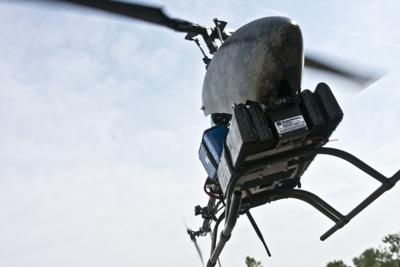Includes Simplified Regulations For Commercial And Other Non-Recreational Uses
The UAS America Fund, LLC (“UAS Fund”) filed a formal Petition for Rulemaking (“Petition”) for ultra-small unmanned aircraft systems (“UAS”) with the FAA on December 18. The Petition balances safety concerns with the tremendous need to restore non-recreational operations and research across many industries in the United States and includes simplified regulations for commercial and other non-recreational uses, based on a sound safety analysis.

UAS Fund’s new “Micro” unmanned aircraft (“mUA”) rule would govern commercial operations for UAS that are extremely light weight (3 pounds or less), operated at low altitudes (below 400 feet), at least 5 miles away from airports, and by pilots with a demonstrated level of aeronautical knowledge. An included safety study concludes that collisions between mUA and manned aircraft are remote if not extremely unlikely.
“We are promoting the Micro UAS Rule to unleash billions of dollars of economic activity within the 3 pound and under commercial and research sectors in 2015,” said Michael Dyment, the Managing Partner of NEXA Capital Partners, the major shareholder of the UAS Fund, “More steps will be announced shortly to open up UAS markets for larger platforms defining other promising sectors where safety is just not an issue.”
The Safety Study, completed by aviation safety subject matter experts at Exponent Engineering P.C., is based upon decades of the FAA’s own bird strike data, and establishes that there is virtually no risk of an injury-causing or fatal mid-air collision when a mUA weighing 3 pounds or less is operated below 400 feet and at least 5 miles from airports. Despite more than 10 billion birds in the US, there has never been a reported injury or death attributed to a bird strike involving aircraft and small or medium birds (3.8 pounds and under) in the past 25 years.

“Instead of the burdensome regulatory process proposed by FAA, if we regulate in a smarter way, it will unlock benefits of smaller categories of UAS without tying up the entire industry,” said Matthew Bieschke, President of UAS America Fund. In the current phase of UAS Fund’s segmented approach to UAS development and commercialization, a risk-based rulemaking process has been designed and is being facilitated to get the entire UAS industry moving quickly but safely. UAS Fund developed a reasonable and logical market segmentation for UAS operations leading to an incremental regulatory framework. “We segmented the market focusing on an initial categorization that begins where there is demand today, and we want to remove the unnecessary burdens that will thwart the economic benefits, while maintaining a safe environment,” Bieschke added. UAS Fund plans to propose additional rulemaking petitions for larger and more complex commercial and academic drone operations.
The mUA uses addressed by the Petition have immediate positive economic impact in industries such as aerial photography, real estate, news gathering and reporting, agricultural monitoring, infrastructure inspections, search and rescue, firefighting, training and certification, to name a few. For example, if UAS were to boost economic output by only 2% of 2013 GDP for these selected NAICS Codes the impact would be worth some $12.6 billion.
(Images from file)
 Bolen Gives Congress a Rare Thumbs-Up
Bolen Gives Congress a Rare Thumbs-Up The SportPlane Resource Guide RETURNS!!!!
The SportPlane Resource Guide RETURNS!!!! Buying Sprees Continue: Textron eAviation Takes On Amazilia Aerospace
Buying Sprees Continue: Textron eAviation Takes On Amazilia Aerospace Hawker 4000 Bizjets Gain Nav System, Data Link STC
Hawker 4000 Bizjets Gain Nav System, Data Link STC Echodyne Gets BVLOS Waiver for AiRanger Aircraft
Echodyne Gets BVLOS Waiver for AiRanger Aircraft




